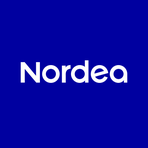Nordea Bank's Strategic Share Buyback: A Closer Look
December 18, 2024, 4:00 pm
Nordea Bank Abp is making waves in the financial world with its recent share buyback program. This move is not just a financial maneuver; it’s a strategic play in the chess game of corporate finance. On December 12 and 13, 2024, the bank repurchased a total of 568,792 shares, investing over 6 million euros. This decision is rooted in a broader strategy aimed at optimizing capital and enhancing shareholder value.
The buyback is part of a larger initiative announced on October 17, 2024. Nordea set a cap of 250 million euros for this program, reflecting a robust commitment to returning capital to shareholders. The bank’s leadership is signaling confidence in its financial health and future prospects. It’s a clear message: Nordea believes its shares are undervalued.
The mechanics of the buyback are straightforward. On December 12, Nordea repurchased 285,244 shares at an average price of 10.61 euros each. The following day, it bought an additional 283,548 shares at a slightly higher average price of 10.68 euros. These transactions were executed across various trading venues, including XHEL, XSTO, and XCSE. The total expenditure for these two days reached approximately 6 million euros, a significant investment in its own future.
Why does this matter? Share buybacks can be a double-edged sword. On one hand, they can boost earnings per share by reducing the number of shares outstanding. This can lead to a higher stock price, benefiting existing shareholders. On the other hand, critics argue that buybacks can divert funds from more productive uses, such as investing in growth or innovation. However, in Nordea’s case, the buyback appears to be a calculated risk, aimed at enhancing shareholder value in a competitive market.
The bank’s treasury shares now stand at over 17 million, split between capital optimization and remuneration purposes. This strategic allocation indicates a balanced approach to managing its capital structure. The decision to hold treasury shares for remuneration purposes suggests that Nordea is also focused on incentivizing its employees, aligning their interests with those of shareholders.
Nordea’s buyback program is executed in compliance with European regulations, ensuring transparency and fairness in the process. The bank is adhering to Regulation No. 596/2014, which governs market abuse, and the Commission Delegated Regulation (EU) 2016/1052. This regulatory framework is designed to protect investors and maintain market integrity, reinforcing Nordea’s commitment to ethical practices.
The timing of the buyback is also noteworthy. As the global economy grapples with uncertainty, many companies are hesitant to commit capital. Nordea’s bold move stands out in this context. It reflects a belief in its resilience and a willingness to invest in its own future. This confidence can be contagious, potentially attracting more investors to the stock.
Market reactions to share buybacks can vary. In some cases, they lead to immediate stock price increases. In others, the effects are more muted. For Nordea, the long-term impact will depend on how effectively it communicates its strategy to the market. Transparency will be key. Investors need to understand the rationale behind the buyback and how it fits into the bank’s overall strategy.
Nordea’s approach to capital management is a testament to its strategic foresight. By repurchasing shares, the bank is not just playing defense; it’s also positioning itself for future growth. The financial landscape is evolving, and companies must adapt to stay competitive. Nordea’s buyback program is a proactive step in this direction.
Looking ahead, the success of this initiative will hinge on several factors. Market conditions, investor sentiment, and the bank’s operational performance will all play crucial roles. If Nordea can maintain its momentum and deliver strong results, the buyback could prove to be a masterstroke.
In conclusion, Nordea Bank’s recent share buyback is more than just a financial transaction. It’s a strategic maneuver designed to enhance shareholder value and signal confidence in its future. As the bank navigates the complexities of the financial landscape, this initiative could serve as a cornerstone of its growth strategy. The coming months will reveal whether this bold move pays off, but for now, Nordea is making its intentions clear: it’s in the game to win.
The buyback is part of a larger initiative announced on October 17, 2024. Nordea set a cap of 250 million euros for this program, reflecting a robust commitment to returning capital to shareholders. The bank’s leadership is signaling confidence in its financial health and future prospects. It’s a clear message: Nordea believes its shares are undervalued.
The mechanics of the buyback are straightforward. On December 12, Nordea repurchased 285,244 shares at an average price of 10.61 euros each. The following day, it bought an additional 283,548 shares at a slightly higher average price of 10.68 euros. These transactions were executed across various trading venues, including XHEL, XSTO, and XCSE. The total expenditure for these two days reached approximately 6 million euros, a significant investment in its own future.
Why does this matter? Share buybacks can be a double-edged sword. On one hand, they can boost earnings per share by reducing the number of shares outstanding. This can lead to a higher stock price, benefiting existing shareholders. On the other hand, critics argue that buybacks can divert funds from more productive uses, such as investing in growth or innovation. However, in Nordea’s case, the buyback appears to be a calculated risk, aimed at enhancing shareholder value in a competitive market.
The bank’s treasury shares now stand at over 17 million, split between capital optimization and remuneration purposes. This strategic allocation indicates a balanced approach to managing its capital structure. The decision to hold treasury shares for remuneration purposes suggests that Nordea is also focused on incentivizing its employees, aligning their interests with those of shareholders.
Nordea’s buyback program is executed in compliance with European regulations, ensuring transparency and fairness in the process. The bank is adhering to Regulation No. 596/2014, which governs market abuse, and the Commission Delegated Regulation (EU) 2016/1052. This regulatory framework is designed to protect investors and maintain market integrity, reinforcing Nordea’s commitment to ethical practices.
The timing of the buyback is also noteworthy. As the global economy grapples with uncertainty, many companies are hesitant to commit capital. Nordea’s bold move stands out in this context. It reflects a belief in its resilience and a willingness to invest in its own future. This confidence can be contagious, potentially attracting more investors to the stock.
Market reactions to share buybacks can vary. In some cases, they lead to immediate stock price increases. In others, the effects are more muted. For Nordea, the long-term impact will depend on how effectively it communicates its strategy to the market. Transparency will be key. Investors need to understand the rationale behind the buyback and how it fits into the bank’s overall strategy.
Nordea’s approach to capital management is a testament to its strategic foresight. By repurchasing shares, the bank is not just playing defense; it’s also positioning itself for future growth. The financial landscape is evolving, and companies must adapt to stay competitive. Nordea’s buyback program is a proactive step in this direction.
Looking ahead, the success of this initiative will hinge on several factors. Market conditions, investor sentiment, and the bank’s operational performance will all play crucial roles. If Nordea can maintain its momentum and deliver strong results, the buyback could prove to be a masterstroke.
In conclusion, Nordea Bank’s recent share buyback is more than just a financial transaction. It’s a strategic maneuver designed to enhance shareholder value and signal confidence in its future. As the bank navigates the complexities of the financial landscape, this initiative could serve as a cornerstone of its growth strategy. The coming months will reveal whether this bold move pays off, but for now, Nordea is making its intentions clear: it’s in the game to win.

